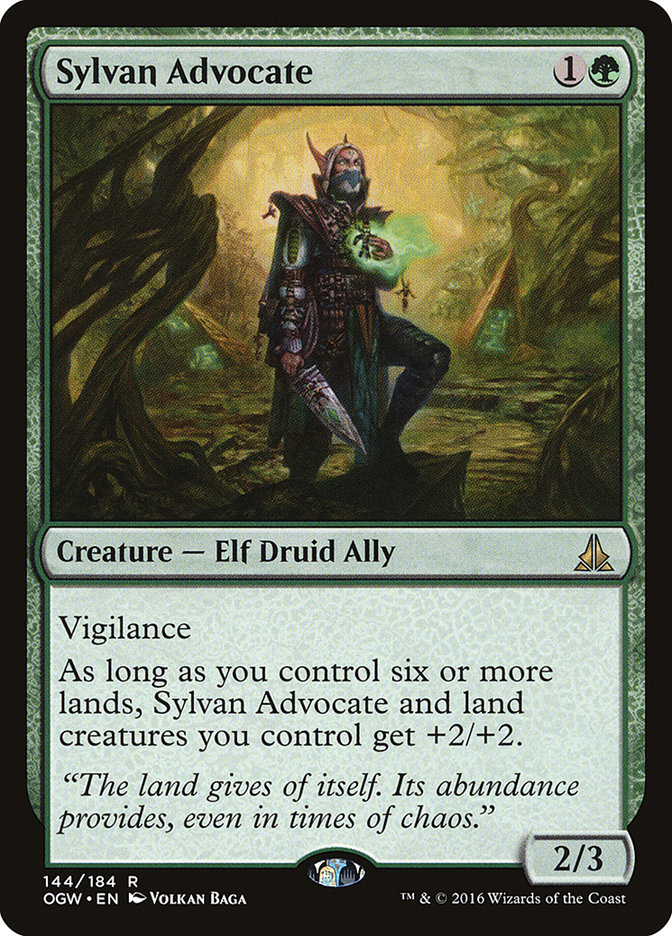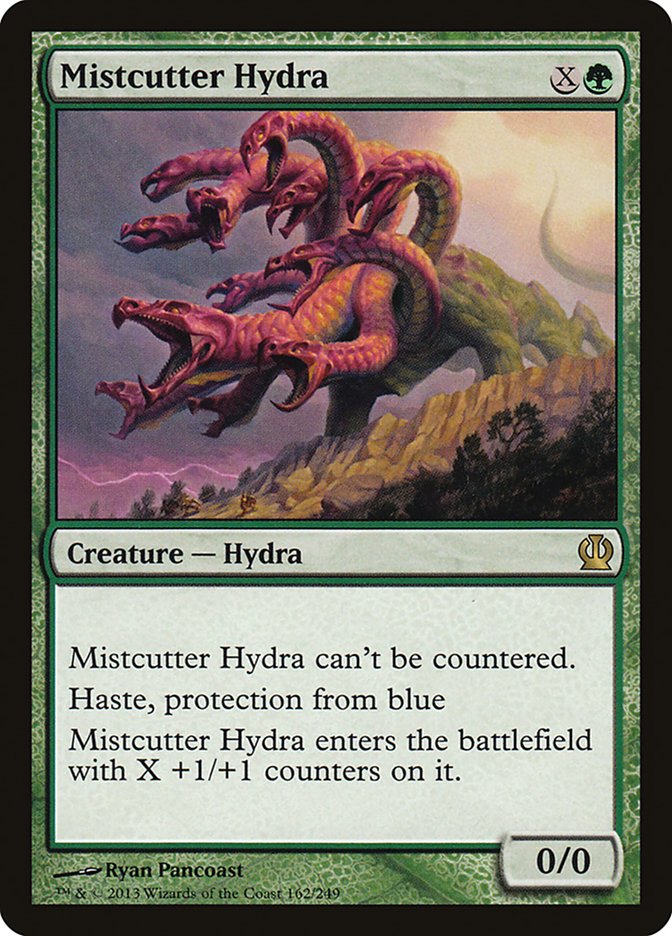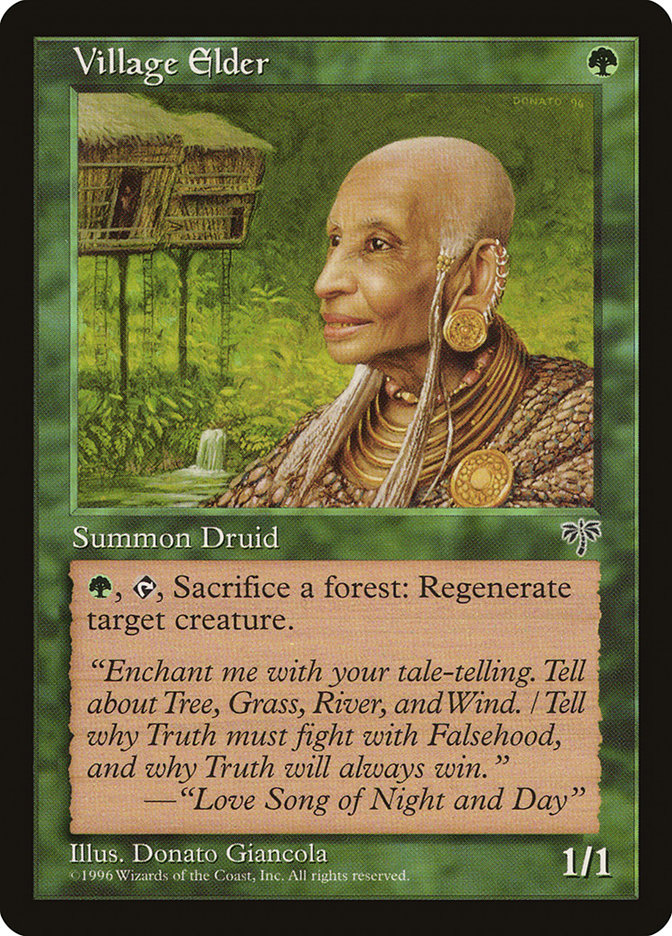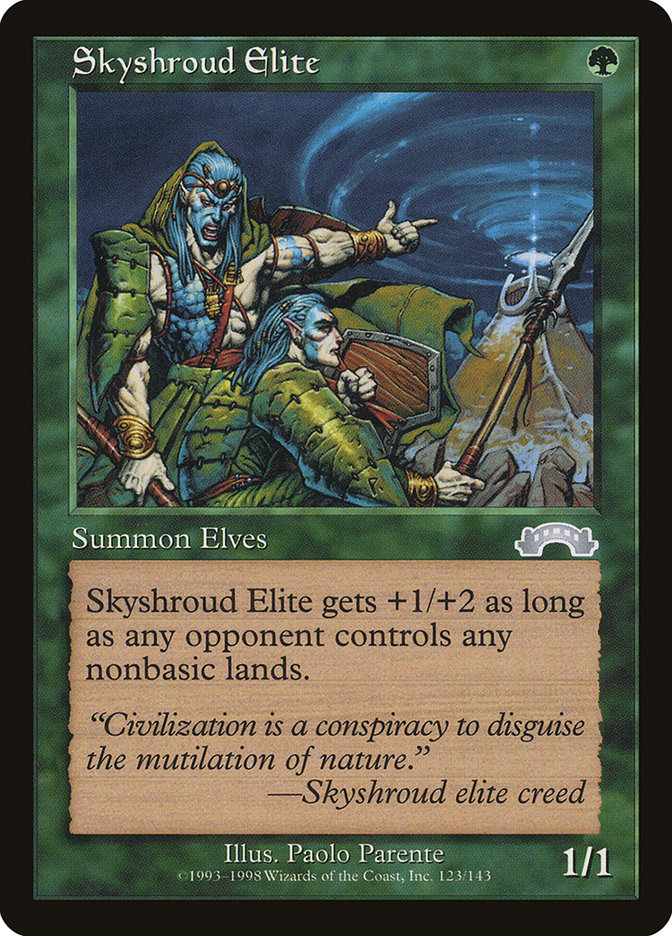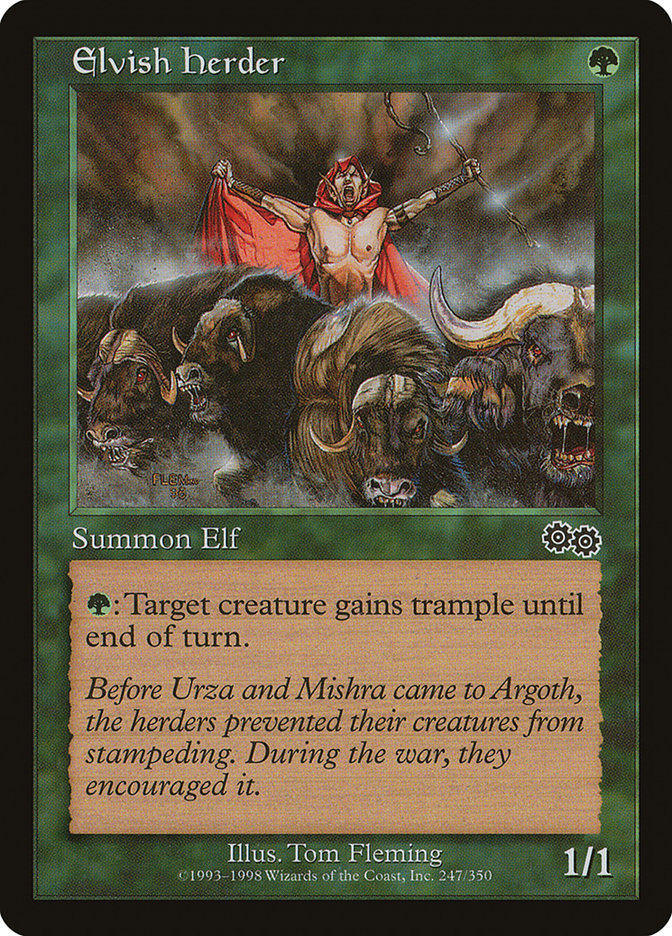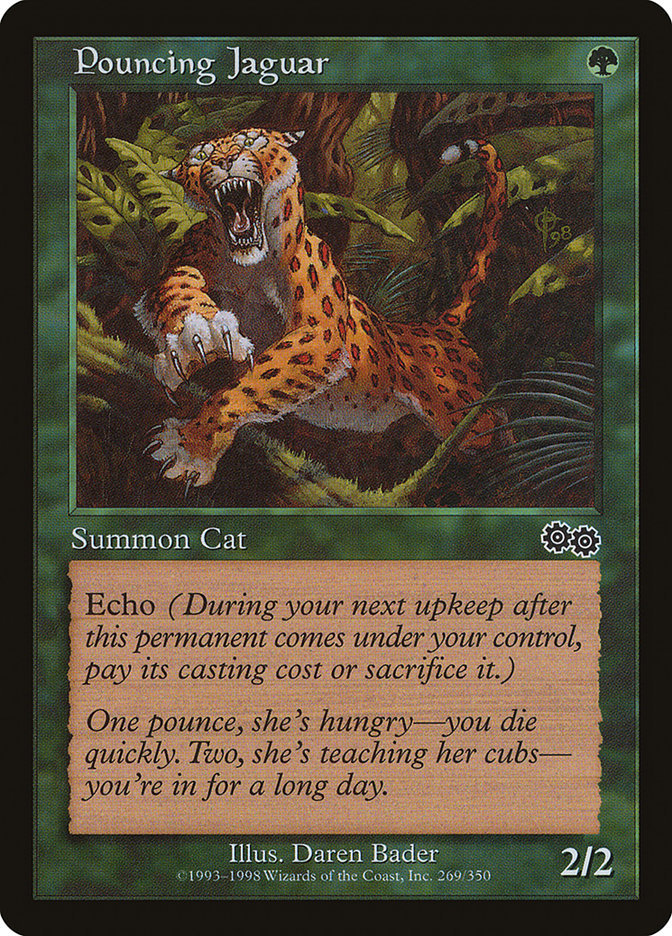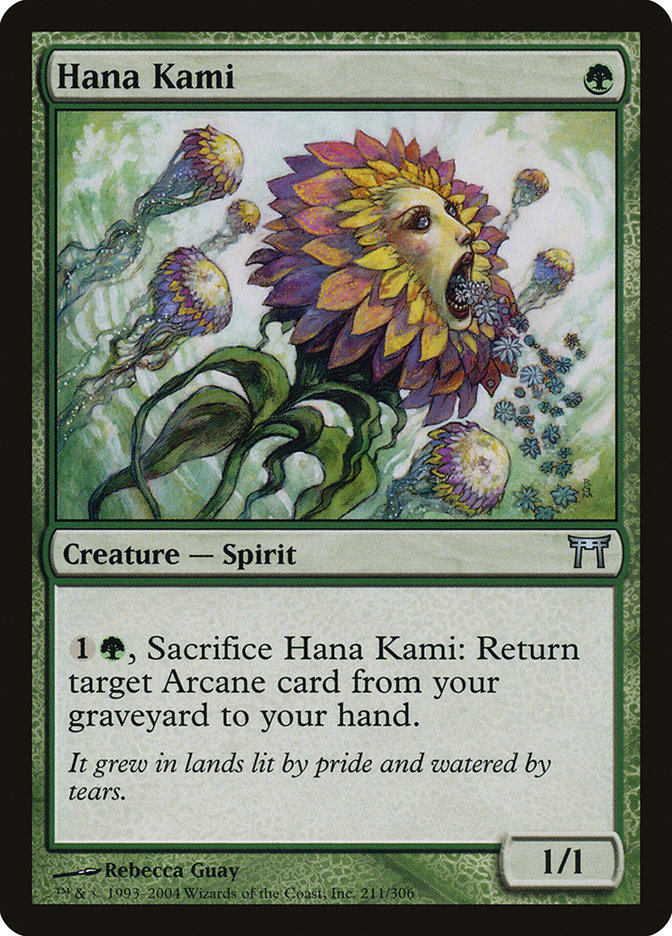Kin-Tree Warden MTG Card
| Card sets | Released in 3 setsSee all |
| Mana cost | |
| Converted mana cost | 1 |
| Rarity | Common |
| Type | Creature — Human Warrior |
| Abilities | Morph |
| Power | 1 |
| Toughness | 1 |
Text of card
: Regenerate Kin-Tree Warden. Morph (You may cast this card face down as a 2/2 creature for . Turn it face up any time for its morph cost.)
"The amber of the tree and the blood of my veins are the same."
Cards like Kin-Tree Warden
Kin-Tree Warden is a versatile creature in the realm of Magic: The Gathering. Like other two-mana creatures, such as Sylvan Advocate and Duskwatch Recruiter, it comes with its own set of tactical advantages. What sets the Kin-Tree Warden apart is its ability to regenerate, ensuring its resilience and sticking power on the battlefield, which is a trait shared with the likes of Reassembling Skeleton.
When considering utility creatures in the game, Mistcutter Hydra jumps out as another similar card in terms of being a formidable creature that can become uncounterable. Though it belongs to a different mana curve, it shares the Kin-Tree Warden’s potential of being a game changer under the right conditions. Another comparison could be made with Ulvenwald Tracker, which provides a fighting mechanic to eliminate opposing creatures, a strategy that can be complemented by the Warden’s regenerative ability to survive the confrontation.
In summary, the Kin-Tree Warden’s combination of low cost, regeneration, and morph feature makes it a considerable choice for players who value resilience and strategic flexibility in their creature line-up.
Cards similar to Kin-Tree Warden by color, type and mana cost
Card Pros
Card Advantage: Kin-Tree Warden offers potential card advantage with its morph ability, allowing you to set it face down as a 2/2 creature and turn it face up whenever you need its abilities. This versatility can lead to advantageous board positions.
Resource Acceleration: While not directly providing mana acceleration, the mere presence of Kin-Tree Warden on the field can accelerate your resource allocation, allowing you to allocate resources elsewhere while still having the ability to adapt to an evolving game state, thanks to its low morph cost.
Instant Speed: Kin-Tree Warden’s regenerative ability can be used at instant speed, protecting it from potential destruction. This can discourage opponents from targeting it, thereby maintaining your board presence and impacting the opponent’s decisions.
Card Cons
Discard Requirement: Kin-Tree Warden’s ability to regenerate itself necessitates you to discard another card, which may sometimes leave you at a card disadvantage when trying to protect this creature.
Specific Mana Cost: This card requires green mana, making it exclusively viable in green or multi-color decks, thereby restricting its flexibility in deck construction.
Comparatively High Mana Cost: Although its mana cost is relatively low, the additional cost to utilize its regeneration ability is significant when compared to other creatures offering similar benefits without the added expense.
Reasons to Include Kin-Tree Warden in Your Collection
Versatility: Kin-Tree Warden is a nimble addition to any deck that appreciates resilient creatures. Its low cost allows for an early play, while its morph and regeneration abilities grant it survival tactics against removal-heavy opponents.
Combo Potential: This card can serve as a valuable cog in warrior or morph-themed decks. With its synergy in tribal strategies, it easily fuels mechanics that thrive on the presence of warriors and morphed units.
Meta-Relevance: In an environment where every creature counts, the Kin-Tree Warden holds its ground. The ability to regenerate provides a buffer against sweepers, which are common in various metas, ensuring your board presence remains unscathed and ready to adapt to the evolving battlefield.
How to Beat
Confronting a Kin-Tree Warden on the battlefield presents a particular challenge for MTG players due to its regenerative ability, ensuring it stands firm even when facing potential destruction. Players must think tactically, employing removal spells that don’t destroy but exile, such as Path to Exile or Swords to Plowshares, thus bypassing the Warden’s defenses.
Alternatively, utilizing board-wiping effects that alter the rules of engagement can prove effective. Cards like Languish or Wrath of God can sweep away the Warden without the risk of regeneration. Even simpler, one can opt for combat tricks to enhance creature power- overpowering the Warden before regeneration is an option.
The key is in strategic play, choosing the right method at the opportune moment to ensure that the steadfast Kin-Tree Warden does not outlast your game plan. Understanding its vulnerabilities can turn the tide of battle in your favor.
Where to buy
If you're looking to purchase Kin-Tree Warden MTG card by a specific set like Khans of Tarkir and Mystery Booster, there are several reliable options to consider. One of the primary sources is your local game store, where you can often find booster packs, individual cards, and preconstructed decks from current and some past sets. They often offer the added benefit of a community where you can trade with other players.
For a broader inventory, particularly of older sets, online marketplaces like TCGPlayer, Card Kingdom and Card Market offer extensive selections and allow you to search for cards from specific sets. Larger e-commerce platforms like eBay and Amazon also have listings from various sellers, which can be a good place to look for sealed product and rare finds.
Additionally, Magic’s official site often has a store locator and retailer lists for finding Wizards of the Coast licensed products. Remember to check for authenticity and the condition of the cards when purchasing, especially from individual sellers on larger marketplaces.
Below is a list of some store websites where you can buy the Kin-Tree Warden and other MTG cards:
 BUY NOW
BUY NOW BurnMana is an official partner of TCGPlayer
- eBay
- Card Kingdom
- Card Market
- Star City Games
- CoolStuffInc
- MTG Mint Card
- Hareruya
- Troll and Toad
- ABU Games
- Card Hoarder Magic Online
- MTGO Traders Magic Online
See MTG Products
Printings
The Kin-Tree Warden Magic the Gathering card was released in 3 different sets between 2014-09-26 and 2019-11-07. Illustrated by Volkan Baǵa.
| # | Released | Name | Code | Symbol | Number | Frame | Layout | Border | Artist |
|---|---|---|---|---|---|---|---|---|---|
| 1 | 2014-09-26 | Khans of Tarkir | KTK | 139 | 2015 | Normal | Black | Volkan Baǵa | |
| 2 | 2019-11-07 | Mystery Booster | MB1 | 1250 | 2015 | Normal | Black | Volkan Baǵa | |
| 3 | The List | PLST | KTK-139 | 2015 | Normal | Black | Volkan Baǵa |
Legalities
Magic the Gathering formats where Kin-Tree Warden has restrictions
| Format | Legality |
|---|---|
| Historicbrawl | Legal |
| Historic | Legal |
| Legacy | Legal |
| Paupercommander | Legal |
| Oathbreaker | Legal |
| Gladiator | Legal |
| Pioneer | Legal |
| Commander | Legal |
| Modern | Legal |
| Pauper | Legal |
| Vintage | Legal |
| Duel | Legal |
| Explorer | Legal |
| Penny | Legal |
| Timeless | Legal |
Rules and information
The reference guide for Magic: The Gathering Kin-Tree Warden card rulings provides official rulings, any errata issued, as well as a record of all the functional modifications that have occurred.
| Date | Text |
|---|---|
| 2014-09-20 | A permanent that turns face up or face down changes characteristics but is otherwise the same permanent. Spells and abilities that were targeting that permanent, as well as Auras and Equipment that were attached to the permanent, aren’t affected. |
| 2014-09-20 | Any time you have priority, you may turn the face-down creature face up by revealing what its morph cost is and paying that cost. This is a special action. It doesn’t use the stack and can’t be responded to. Only a face-down permanent can be turned face up this way; a face-down spell cannot. |
| 2014-09-20 | At any time, you can look at a face-down spell or permanent you control. You can’t look at face-down spells or permanents you don’t control unless an effect instructs you to do so. |
| 2014-09-20 | Because the permanent is on the battlefield both before and after it’s turned face up, turning a permanent face up doesn’t cause any enters-the-battlefield abilities to trigger. |
| 2014-09-20 | If a face-down permanent leaves the battlefield, you must reveal it. You must also reveal all face-down spells and permanents you control if you leave the game or if the game ends. |
| 2014-09-20 | Morph lets you cast a card face down by paying , and lets you turn the face-down permanent face up any time you have priority by paying its morph cost. |
| 2014-09-20 | The face-down spell has no mana cost and has a converted mana cost of 0. When you cast a face-down spell, put it on the stack face down so no other player knows what it is, and pay . This is an alternative cost. |
| 2014-09-20 | When the spell resolves, it enters the battlefield as a 2/2 creature with no name, mana cost, creature types, or abilities. It’s colorless and has a converted mana cost of 0. Other effects that apply to the creature can still grant it any of these characteristics. |
| 2014-09-20 | You must ensure that your face-down spells and permanents can easily be differentiated from each other. You’re not allowed to mix up the cards that represent them on the battlefield in order to confuse other players. The order they entered the battlefield should remain clear. Common methods for doing this include using markers or dice, or simply placing them in order on the battlefield. |



